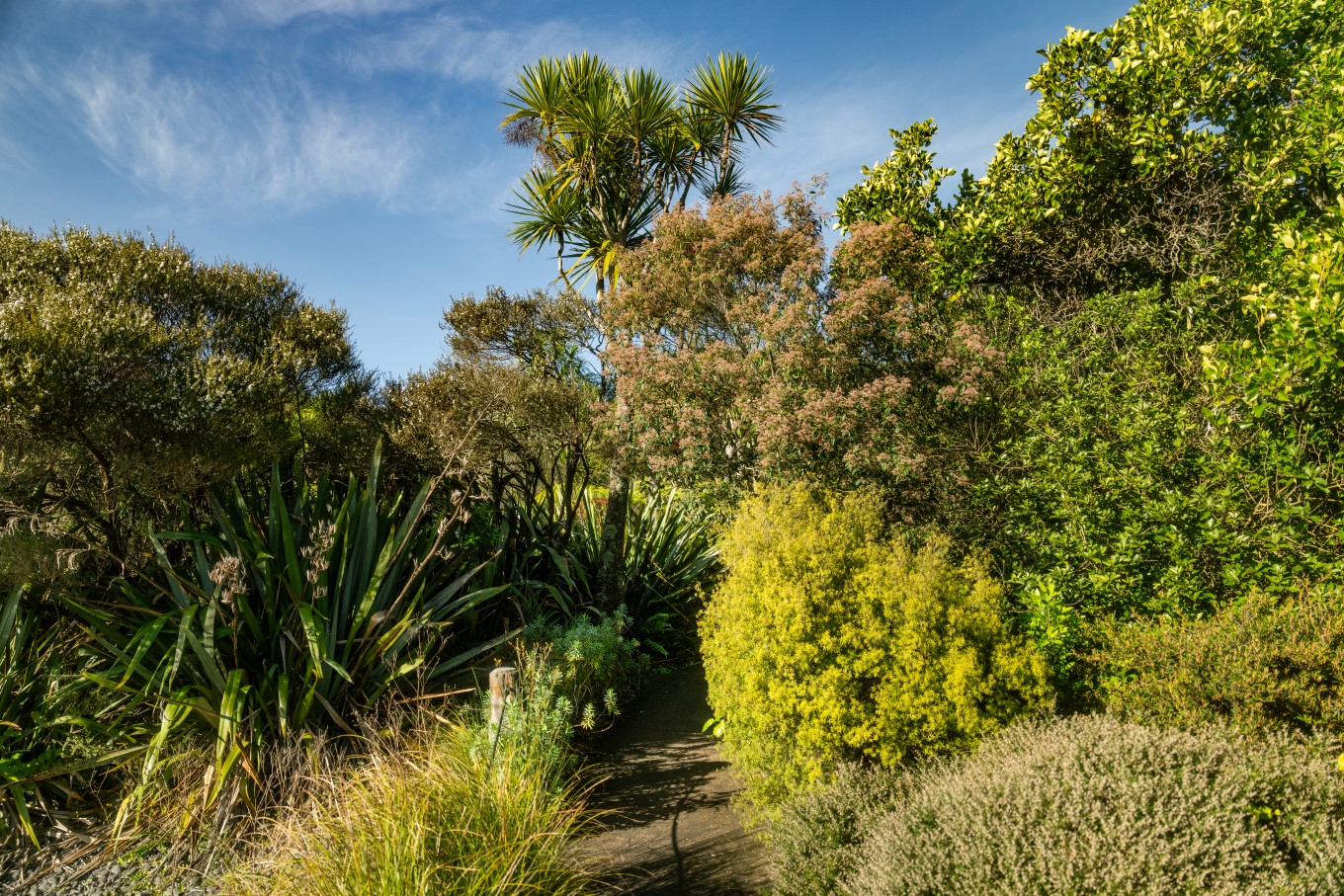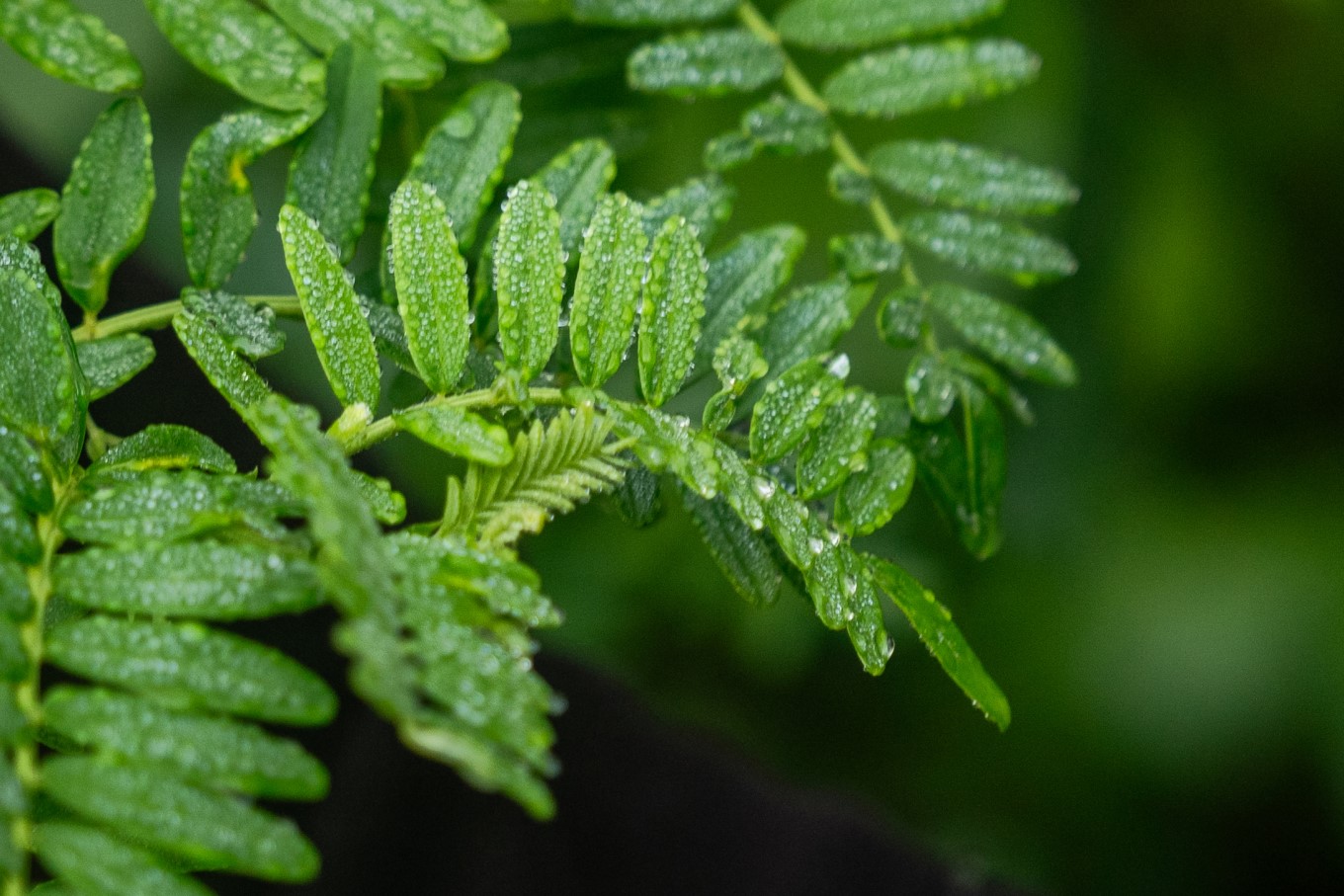Spring might get all the glory in the gardening world, but seeing the Auckland Botanic Gardens in winter is a testament to the beauty that can be achieved in your backyard any time of the year. This treasure of Tāmaki Makaurau is bursting with colour and birdsong even in the coldest months, and during this time, the gardening team is as busy as ever.
Landscape gardener and horticulturist Jeffrey Jones is one of the collection curators at Auckland Botanic Gardens. His Monday mornings start by giving his areas – the Perennial Garden and the visitor centre surrounds – a tidy up with a leaf blower as he assesses the tasks ahead for the week. In winter, that might mean cutting back, lifting or dividing plants to promote new life, or adding mulch to protect plants from weeds and provide the soil with nutrients.
Jeffrey shares some pro tips for making your garden look its best in winter, spring and summer, and some advice on attracting native birds to your backyard.
Think at least a season ahead
To keep your garden looking its best throughout the year, you need to start early. If you're dreaming of daffodils and bulbs bursting through the ground in spring, it’s best to plant them in late April or early May.
“To create our colourful displays here at the Botanic Gardens, we are always thinking ahead,” says Jeffrey. “If you really want spring action with flowers like freesias, daffodils and gladioli, you really need to be planting late autumn up to mid-May.”
But it's not only spring that is blooming gorgeous in Auckland. Lots of flowers blossom during winter, such as cyclamen, snowflakes, and Narcissus ‘Erlicheer’ – but again, it takes planning.
"We start planning for our winter colour displays in January by ordering seeds and plants,” says Jeffrey. “We know our winter plants do best if they’ve been in the ground for a little while and if they’ve had a bit of growth before the first frost, so we planted out our winter displays – thousands of Icelandic poppies, alyssum and primula – back in April."
Some spring blooms such as tulips and peonies aren’t well suited to Auckland’s mild climate. To avoid disappointment in your own garden, pick the brains of the experts and select the best picks of the bunch.
Auckland Botanic Gardens has many free brochures available to help you choose plants that grow well in Auckland's conditions all year round.

Plant trees during winter
Jeffrey says winter is the perfect time to plant trees. In the colder months, trees can focus on establishing strong root systems without growing leaves, flowers or fruit. Plant fruit trees in free-draining areas and work compost into the soil to ensure the tree has lots of nutrition.
Stake trees when planting to avoid damaging the roots when the plant is established.
Fruitful gardening in Auckland
“What separates the Auckland Botanic Gardens from the region’s other beautiful parks is we’re also here to research and trial what grows best in Auckland,” says Jeffrey. “We produce brochures with tips for the best plants for Auckland’s subtropical climate and these are a result of many years of research. We put a range of plants into our trial garden so our experts can pick their top eight plants for this region.”
Fruit trees that grow well in Auckland include feijoas (plant two trees for cross-pollination and a bumper crop), tamarillos and citrus such as mandarins, limes and Meyer lemons.
European plums such as Prunus domestica ‘Luisa’ and Japanese plums like Prunus domestica ‘Hawera’ are well suited to Auckland’s humid climate.
For a beautiful fruiting tree that will provide shape and structure to your backyard, try Japanese persimmon Diospyros kaki ‘Fuyu’, a tree with spectacular foliage that turns red and orange in autumn.
Add native plants to the mix
Many gorgeous native shrubs and trees can also be planted in winter to create colour, shape and form in your garden – as well as being food sources for native bird species. A stroll through the Native Plant ID Trail at the Auckland Botanic Gardens will inspire. Purple and pink hebes are a haven for insects, the favourite snack of pīwakawaka (fantails) and tauhou (silvereyes).

Flowering plants like kōwhai bloom from July until November and are a favourite of nectar-lovers tūī and kererū (New Zealand pigeon). Kōwhai can reach heights of 10m, so if you’re short on space, consider a dwarf variety such as Sophora microphylla ‘Dragon’s Gold’.
For shape and interest, don’t overlook mānuka (tea tree), which is excellent for hedges and coastal areas and a favourite with both nectar-loving and insect-eating birds.
“You can’t go past mānuka,” says Jeffrey. “They are smaller, growing with flowers at different times of the year. With native birds, you need to think about seasonality – planting food sources for them at all times of the year.”
Other native plants to try are makomako (wineberry), houhere (lacebark), harakeke (flax) and dwarf varieties of pūriri.
Plant some rare beauties
To really do your bit for conservation, plant rare or threatened native species. Jeffrey suggests the pale flowering kūmarahou Pomaderris hamiltonii.
“Pomaderris hamiltonii is the cousin of the common kūmarahou, but it’s threatened and is only found in the upper North Island” says Jeffrey. “It has beautiful cream flowers and is an Auckland treasure we want to protect.”
Another regional treasure to plant is Clianthus puniceus, an Auckland variety of kākā beak. This threatened shrub, named after its beak-shaped flowers, puts on a display of colour from August to November that nectar-eating birds love.
“The common kākā beak Clianthus maximus gets all the glory, but Clianthus puniceus, is an Auckland variety that needs our help and still puts on a lovely show."

Visit the gardens for inspiration
Not sure where to start in your own garden? A wander through the grounds of the Auckland Botanic Gardens will provide loads of inspiration. The gardens are gorgeous in all seasons – in winter, the Camellia Garden will bloom with pink and white flowers, and the Magnolia Garden will be in its full glory.
Other spectacular areas in winter include the Rock Garden (there’s even an area that can be hired for weddings), and the aloe section – including the spectacular tree aloes – will be flowering in the cooler months.






